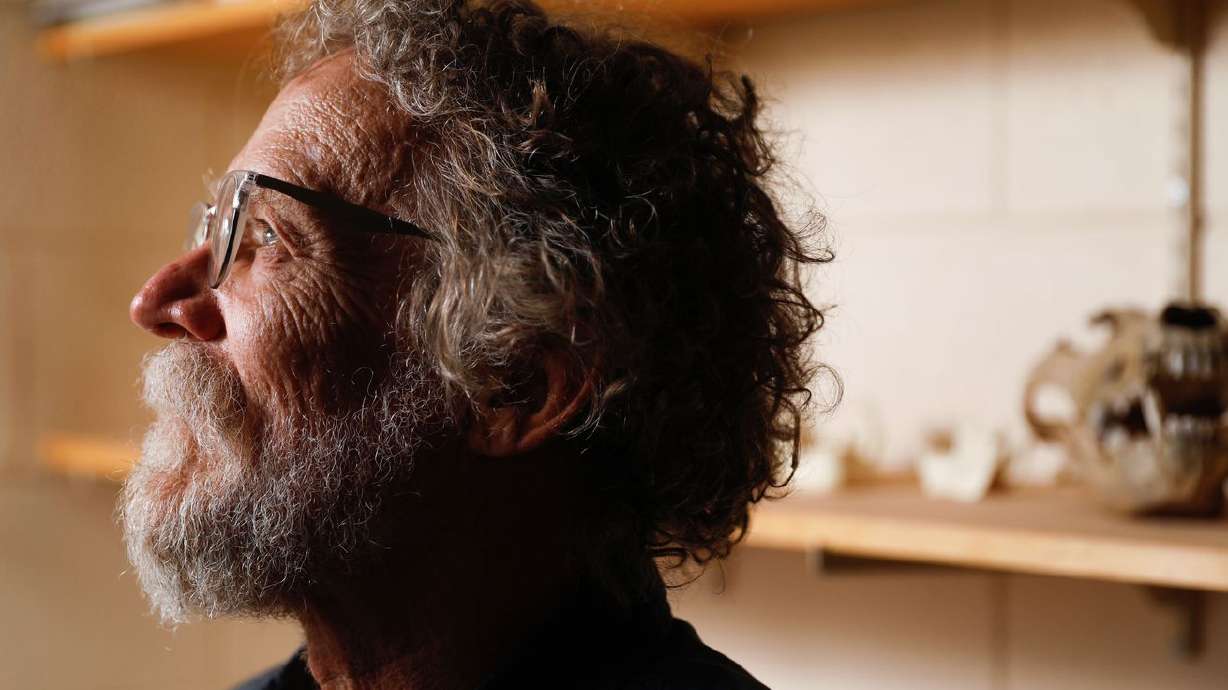Estimated read time: 4-5 minutes
This archived news story is available only for your personal, non-commercial use. Information in the story may be outdated or superseded by additional information. Reading or replaying the story in its archived form does not constitute a republication of the story.
SALT LAKE CITY — A decade ago, during a dispute over sperm whales at an academic conference, a fellow academic raised his fist to University of Utah biology professor David Carrier.
"He said, 'I can hit you with this, but that's not why it evolved,'" Carrier said.
Other than obvious relief that the disagreement didn't turn physical, the encounter stirred Carrier's thinking about human hands.
"As soon as he said that, I thought, 'Wait, maybe that is what hands are about,'" said Carrier, who is an evolutionary biologist.
After all, it is well documented that human males perpetrate the vast majority of violence and most of these acts of aggression are directed at one another.
Carrier's own research shows when human males fight hand to hand, the face is usually the primary target.
Little did he know at the time, the confrontation would eventually inspire a research project that explored whether beards protect the jaw during fistfights.
Recently, the study, conducted by Carrier, Steven Naleway, U. associate professor of mechanical engineering, and recent graduate Ethan Beseris, was selected winner of the 2021 Ig Nobel Peace Prize.
The awards, presented by Marc Abrahams of the science humor magazine Annals of Improbable Research, are a lighthearted counterpoint to the mainstream Nobel Prizes, which will be awarded in October.

First awarded in 1991, Ig Nobel Prizes are intended to celebrate science that "first make people laugh, and then make them think." The U. study is one of 10 awardees.
Naleway, in a statement, that he thinks it's "pretty cool" that the U. researchers were selected as Ig Nobel Prize laureates.
"I am a big believer in the fact that there's a lot of value to research that's approachable for people," he said.
In this case, the research team assembled after Beseris approached Carrier about conducting an undergraduate research project. They decided to explore whether beards protect the jaw during fistfights. A beard covers the lower jawbone, which is one of the primary targets in a fistfight.
"We realized that we needed help from a mechanical engineer. And that's when we contacted Steven Naleway. He's a material scientist and mechanical engineer. He does this kind of work. The reason why the work is trustable and really up to current standards is Steven's participation," Carrier said.
No one went to blows during the study, and none of the researchers had beards while they were conducting the work, Naleway said.
For that matter, Naleway said he is physically incapable of growing a beard, save the stubble grown during the COVID-19 lockdown.
"My wife hated it, and I've seen pictures since and she was right. It was not a good look. So no, I'm not a beard person," he said.

Instead, the researchers used sheep fleece to model human hair and epoxy composite to model facial bones and used a drop weight impact tester to measure impact force and energy absorbed.
They determined that "fully furred samples" were capable of absorbing more energy than samples that had been plucked or sheared.
"Peak force was 16% greater and total energy absorbed was 37% greater in the furred compared to the plucked samples. These differences were due in part to a longer time frame of force delivery in the furred samples. These data support the hypothesis that human beards protect vulnerable regions of the facial skeleton from damaging strikes," according to the team's research article, which was published in the journal Integrative Organismal Biology in April 2020.
Beseris said studies of the pugilism hypothesis help society better understand humans' aggressive tendencies.
"Evolution leaves clues in our anatomy that we can observe and document," he said in a statement. "I believe these are the building blocks of how we address larger societal issues such as war, class disparity and racism."
The researchers' work was previously awarded the 2020 Pineapple Science Prize in Physics, an analog to the Ig Nobel awards, presented in China by the Zhejiang Science Museum and science website Guokr.
Last year's Ig Nobel awards included the diagnosis of misphonia, the distress at hearing other people chew, and the changes to the shape of an earthworm when it's vibrated at high frequency.









